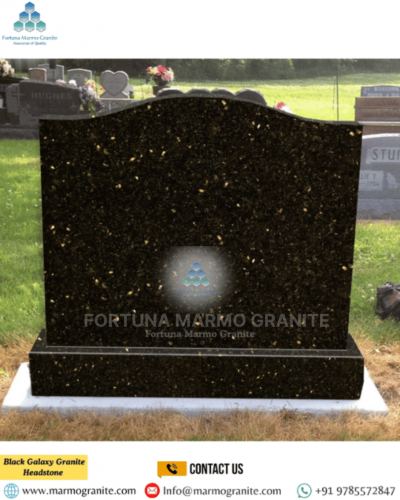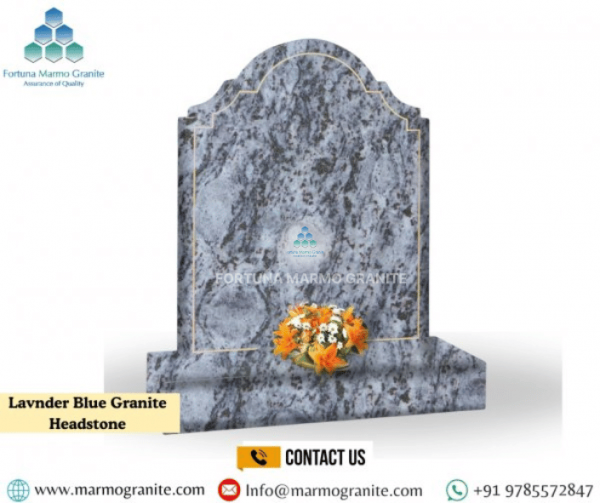Step-by-Step Guide: How to Properly Clean a Headstone
Granite Headstone Cleaning a Granite Headstone is an essential part of preserving the memory of your loved one and maintaining the integrity of the memorial. Headstones, whether made from granite, marble, or limestone, are exposed to the elements daily and may accumulate dirt, moss, algae, or weather-related stains over time. By following a systematic and respectful approach, you can clean the Granite Headstone without causing any damage, ensuring that the memorial remains pristine for years to come. This step-by-step guide will provide you with the proper techniques for cleaning a headstone safely and effectively.
Step 1: Assess the Condition of the Headstone
Before you begin cleaning the Granite Headstone, it's essential to assess the condition of the stone. Some older headstones may be more fragile or have signs of wear, making them susceptible to damage during cleaning. Check for any cracks, chips, or faded engraving, as these can indicate that the stone requires special care. If the headstone is significantly damaged or has extensive wear, it is best to consult a professional before proceeding.
Additionally, inspect the overall condition of the site, including any surrounding vegetation that may affect the headstone. If there are large tree roots, for example, you may need to address these issues before beginning the cleaning process. Taking a moment to assess the situation will help prevent accidents or damage.
Step 2: Gather the Necessary Cleaning Supplies
- Soft-bristled brush (a toothbrush or dedicated stone-cleaning brush is ideal)
- Bucket of distilled water
- Mild dish soap or non-abrasive stone cleaner (ensure it is pH balanced)
- Plastic scraper (for removing moss or lichens)
- Soft cloth or sponge
- Garden sprayer (optional)
- Rags or towels for drying
- Gloves to protect your hands
Step 3: Wet the Headstone
Once you've gathered your supplies, begin by wetting the headstone with clean water. This step is essential to loosen dirt, grime, and any biological growths like moss or algae. Using a gentle spray or a hose on low pressure, wet the surface of the headstone, starting from the top and allowing the water to flow down the stone.
This process not only helps to loosen debris but also prevents any abrasive particles from scratching the surface while you scrub. Let the water soak in for several minutes to ensure that any dirt or residue is softened before cleaning.
Step 4: Scrub the Headstone Gently
- Use circular motions while scrubbing the stone, applying gentle pressure to avoid damaging the surface. For areas that have more buildup, such as moss or algae, use a plastic scraper to carefully remove these growths. Avoid using metal scrapers, as they can scratch the stone. If necessary, you can use a solution of mild soap and water to help break down any tough spots.
- For stubborn stains, a mixture of vinegar and water (approximately one part vinegar to four parts water) can be applied to the affected area. Let the solution sit for a few minutes before gently scrubbing again. Vinegar helps break down organic stains, but it is important to test it on an inconspicuous area first to ensure it does not damage the surface of the stone.
Step 5: Rinse Thoroughly
Once you've scrubbed the headstone, it is essential to rinse it thoroughly to remove any soap or cleaning solution. Leftover cleaner can cause residue to build up on the surface, leading to staining or streaking over time. You can use a garden sprayer or pour water directly over the headstone to rinse off the dirt and soap.
If you are using a hose, ensure the pressure is low to avoid damaging the stone. Continue rinsing until all soap and cleaning solution have been washed away. It's important that no cleaning residue remains on the stone, as this could lead to discoloration or water spots.
Step 6: Dry the Headstone
After rinsing the headstone, use a soft cloth or towel to gently dry the surface. This will help prevent water spots and streaks from forming. Be sure to dry the engraving area carefully, as moisture can cause long-term damage to any etching or text on the headstone. For best results, use a microfiber cloth that is gentle and absorbent.
Leave the stone to air dry for a few hours after wiping it down, as this will help the stone breathe and prevent any moisture from being trapped beneath the surface.
Step 7: Inspect for Remaining Stains or Damage
- For stubborn stains that didn't respond to vinegar, a mixture of baking soda and water can be applied to the affected area. Create a paste by mixing baking soda and water until it forms a thick consistency, then apply it to the stain and leave it on for a few minutes. Use a soft brush to scrub the paste into the stain, then rinse thoroughly.
If you notice any deep cracks, chips, or significant damage during your inspection, it may be necessary to consult a professional monument cleaner who specializes in headstone restoration. They can assess the damage and provide advice on how to proceed without further harming the memorial.
Step 8: Regular Maintenance
- In regions with high humidity or frequent rainfall, moss and algae can grow quickly, so you may need to clean more often. Additionally, if you live in an area with seasonal weather conditions, such as snow or heavy rains, it is a good idea to clean the headstone after extreme weather events to remove dirt and prevent long-term damage.
You can also prevent moss and algae growth by applying a solution of water and bleach (one part bleach to ten parts water) to the stone's surface. Spray the solution lightly onto the stone and let it sit for about 10 minutes before rinsing it off thoroughly. This will help keep the stone free from unwanted growths.
Step 9: Protect the Headstone
While regular cleaning is important, it is also vital to protect the headstone from further damage. Over time, environmental factors such as UV rays, rain, and pollution can cause wear on the stone. To preserve the integrity of the stone and its engraving, avoid using harsh chemicals or high-pressure cleaning methods. Always choose cleaning solutions that are gentle and safe for stone surfaces.
If you are concerned about future maintenance, you may want to inquire about protective coatings or sealants designed for headstones. While granite and marble headstones are durable, protective coatings can provide an additional layer of protection against the elements and keep your loved one's memorial looking beautiful for years to come.
Conclusion
In conclusion, cleaning Granite Headstone is an important part of preserving the memory of your loved ones, and it's crucial to do so with care and respect. By following these steps, you ensure that the stone remains in excellent condition for years to come. Always remember to choose gentle, non-abrasive methods and solutions to avoid causing damage. If you're in need of expert assistance, Fortuna Marmo Granite is here to help. Our team specializes in the restoration and maintenance of Granite Headstone, bringing a high level of expertise to every project. We understand the significance of these memorials and are committed to preserving their beauty for generations to come. Whether you need cleaning, restoration, or general maintenance, you can rely on us for professional, respectful service. Contact us today for guidance and to learn more about our services.
If you're unsure about cleaning techniques or require assistance with restoring or maintaining a granite headstone , you can always rely on Fortuna Marmo Granite. Our team is dedicated to preserving the dignity of memorials, ensuring they stand strong for generations. Reach out to us for professional guidance and services.



